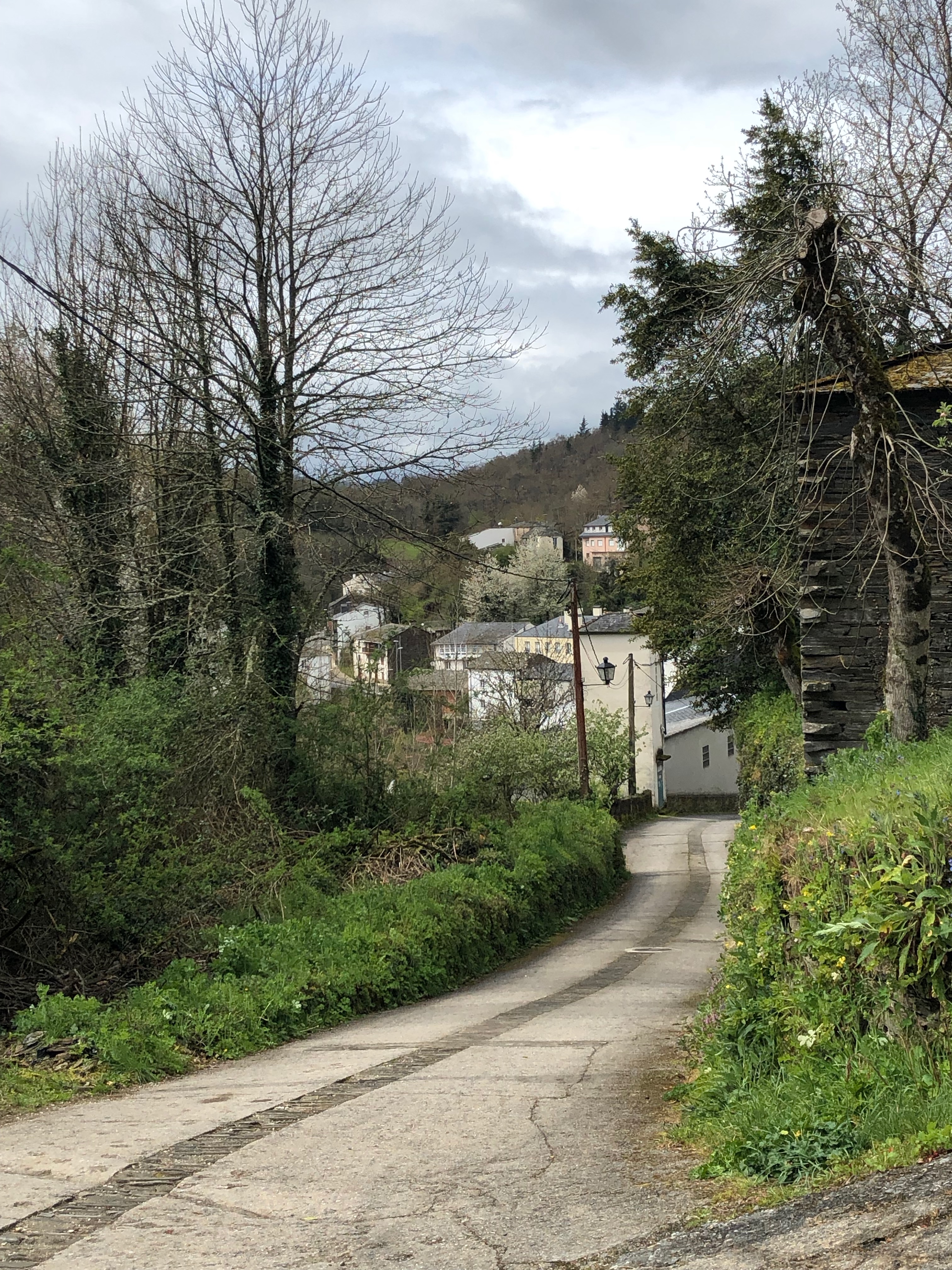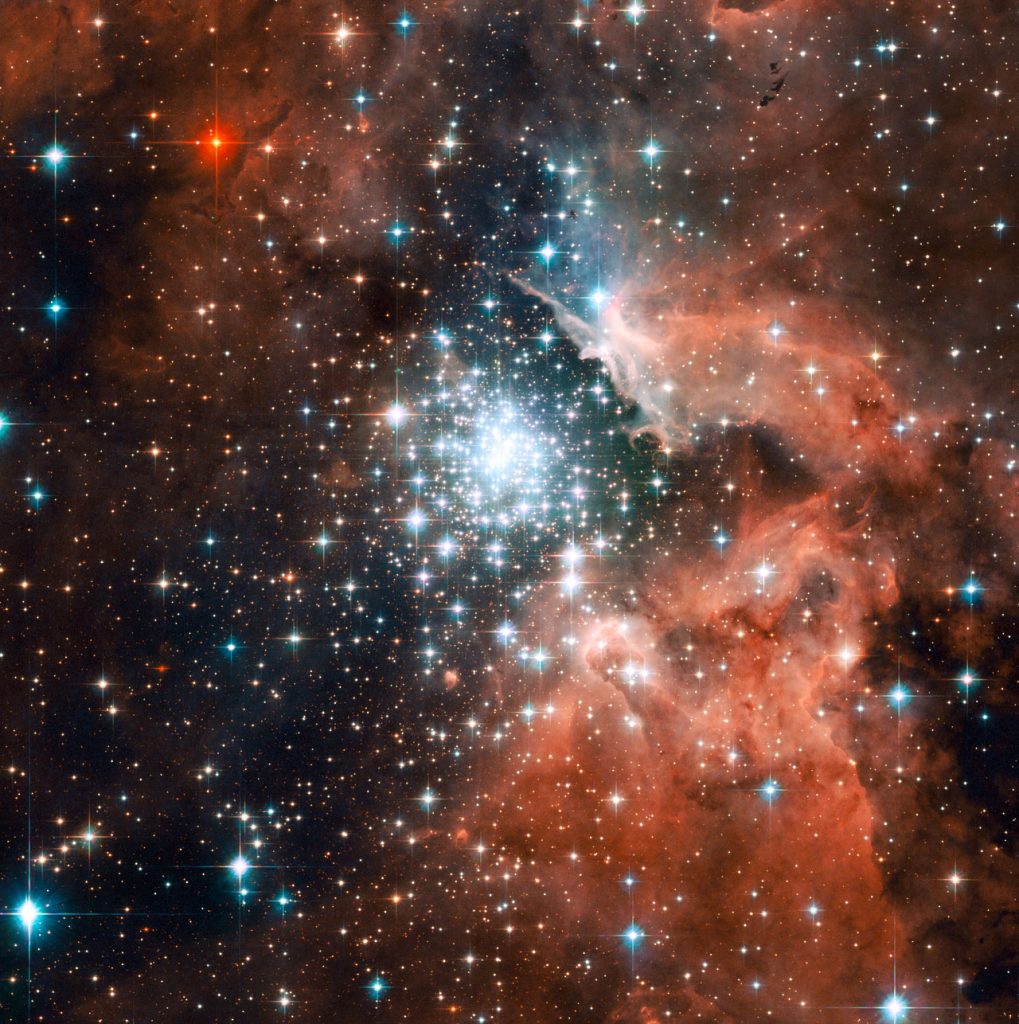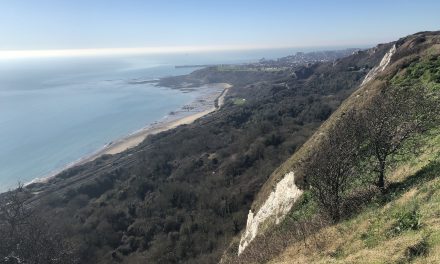
Two places called Samos
On 5th April 2019, whilst walking the Camino of Santiago, I spent the night at a village called Samos, home to the oldest monastery in Spain. A visit to the monastery made a deep spiritual impression on me and inspired me on my return to England to undertake a series of spiritual reflections.
Three weeks later, on 26th April, whilst actively reflecting on how best to make sense of the spiritual impact that the Camino had on my life, I came across a film made on the Greek island of Samos by Yale University. It is called “Journey of the Universe” (JOTU), and it has transformed my understanding of Christianity and of the world in a way that the Greeks would call ‘metanoia’ – a word usually translated as ‘repentance’ in the New Testament, but which more properly means ‘change of mind’ in a transformative sense.

During the following week I devoureda six-week course of study from Yale Universitythat goes into the science behind the film and it was as if many disparate parts of my life were suddenly connected in a way that made perfect sense. For me it was one of those moments when everything changed, and nothing can ever be the same again.
Two alternative worldviews.
In my sermons and in each of the Bible studies that I have prepared up to now my attentionhas been focused on seeking to understand the church’s interpretation of the Bible and its implications in the light of the latest understanding of the world through science and social science research
In effect, promoting dialogue between two very different worldviews.
- Christian, with its focal lens as the person and teaching of Jesus, authenticated by divine revelation through the Bible, the teaching of the church and/or personal revelation to individuals (the action of the Holy Spirit)
- Secular research, with its foundations in human symbolic communication and the scientific method of assessing the truth or falsity of theories and other claims to the truth.
An inquiry lasting 70 years and counting…
As I reflect on this focus, it seems to have emerged almost naturally out of the very core of my being. At school, I was fascinated bymathematics and physics which quite naturally led me to study electrical engineering at University.
A profound spiritual experience at University in 1960 was understood by both the Church of England (my local vicar, the Bishop of Southwell and finally CACTM) as a ‘call’, and I became an ordinand and obtained my BA in Theology in 1965.
It became clear to me during my second year of theology studies that nothing in the New Testament made sense except through the lens of Jesus’ resurrection, and as an engineer and unquestioningbeliever in the power of science, I could not accept the resurrection as a fact. This prevented me from going forward for ordination and led me into a career that startedas a Biblical archaeologistandmoved on to become an entrepreneurwhen the six-day war between Israel and the Arab nations in 1967 brought that particular career to a close. From my early experiences as a young entrepreneur, I matured into abusinessmanand later a management consultant, in which role I obtained my PhD in project management. As a consequence, I found myself also involved with several universities as a social science academic.

With the benefit of hindsight, however, I can see that throughout my career I have never stopped trying to answer the question that I had first asked myself as an unhappy 7-year-old playing with my toy cars in the dust of the boarding school playground, “What’s it all about?”
This has involved reading and studying widelyin the worlds of both religion and science, seeking to reconcile the two apparently contradictory worldviewsof on the one hand science and technology and on the other the Christian faith.
In 1987, after seeing a TV programme series called ‘The Day the Universe Changed’(Burke 1985), reading a book called ‘Supernature’(Watson 1973), and having extensive talks with a client who was a devout Roman Catholic, I felt able to live ‘as if’ the Christian worldview was true, and a year or so later started attending a United Reformed Church regularly. Ayear or two after that I was ordained an Elder.
At the request of this church in 2003/4 I undertook a further course of study and was commissioned as a lay preacher. From that point onwardsevery time I prepared a sermon, or embarked on a course of discussion or study, my focus was on reconciling the two very different worldviews of science and religion.
The two worldviews combined into one
‘Journey of the Universe’tells the story of creation, from the beginning of our Universe to the present day. It does so in a way which conforms to everything that we currently know about the cosmos, the solar system, the earth, life and humanity but woven into a single story. It incorporates an account of the ‘impulse to creativity’ built into creation at every level, and it recognises the impulse of humanity not only to accelerate this creativity, but to understand our place in the universe through differing ‘lenses’drawn from science, social science, and the humanities (art, music, poetry, drama etc.)
In the book that accompanies the film, the authors write, “We are the first generation to learn the comprehensive scientific dimensions of the universe story. We know that the observable universe emerged 13.7 billion years ago, and we now live on a planet orbiting our Sun, one of the trillions of stars in one of the billions of galaxies in an unfolding universe that is profoundly creative and interconnected. With our empirical observations expanded by modern science, we are now realizing that our universe is a single immense energy event that began as a tiny speck that has unfolded over time to become galaxies and stars, palms and pelicans, the music of Bach, and each of us alive today. … … The great discovery of contemporary science is that the universe is not simply a place, but a story — a story in which we are immersed, to which we belong, and out of which we arose.
… … This story has the power to awaken us more deeply to who we are. For just as the Milky Way is the universe in the form of a galaxy, and an orchid is the universe in the form of a flower, we are the universe in the form of a human. And every time we are drawn to look up into the night sky and reflect on the awesome beauty of the universe, we are actually the universe reflecting on itself. And this changes everything.” (Swimme and Tucker 2011)
For me, that is exactly what it has done. It is far too early for me to know how these changes will work out in my life. But some changes are already happening – I have joined the Foundation for the Economics of Sustainability (FEASTA), started buying and eating less red meat, started reading books like “Rules for Revolutionaries” and “Who Owns England?”, downloaded Pope Francis’ Encyclical “Laudate Si’ – On Care for our Common Home.”
For several years now, I have argued that humanity is in desperate need of a common ‘moral compass’, although I could see no route that stood any chance of bringing one into being in the face of diverse worldviews, shared human nature and the perpetual problems caused by “us versus them”. What JOTU does is provides a shared motivation, underpinned by the best science available, for humanity to rise to our responsibilities as the only members of the earth community with conscious self-awareness. From now on, drawing on insights from the Bible and church teaching, from sciences, from social sciences and from humanities, that will be the new focus for my reflections in sermons, Bible studies and Blog posts.
Terry Cooke-Davies
Folkestone, Kent.
References
Burke, J. (1985). The Day the Universe Changed. London, UK, British Broadcasting Corporation.
Swimme, B. T. and M. E. Tucker (2011). Journey of the Universe. Yale, USA, Yale University Press.
Watson, L. (1973). Supernature: The Natural History of the Supernatural.London, Hodder and Stoughton.




Recent Comments